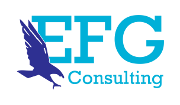Improved efficiency, lower provisions and higher margins to reflect in profits
Dubai: As the UAE economy makes a consistent recovery from the impact of the COVID-19 pandemic, the country has emerged as an attractive destination for foreign capital inflows, according to the Institute of International Finance (IIF).
According to the latest estimates and forecasts from the IIF, the UAE attracted $46.4 billion in foreign capital inflows in 2021 with foreign direct investment (FDI) accounting for nearly half of that at $21.8 billion, ahead of Saudi Arabia’s at $19.5 billion.
While portfolio investment flows into the country is estimated at $19.3 billion, resident capital outflows in terms of foreign direct investments and other investments accounted for $64.2 billion, largely driven by investments and acquisitions by sovereign wealth funds, government related entities and large companies.
Saudi, UAE lead
In the GCC, Saudi Arabia and the UAE accounted for significantly larger share of foreign capital inflows with the UAE topping the region in FDI.
“Our estimates show non-resident capital flows to the six GCC states reached $142 billion in 2021, an increase of $21 billion from 2020. This increase was driven by a surge in FDI, particularly to Saudi Arabia and the UAE, and the IMF’s general SDR [special drawing rights] allocation,” said Garbis Iradian, Chief Economist of IIF, Middle East and North Africa.
Data showed portfolio debt flows and other investments, excluding the SDRs allocation, have declined due to less financing need by regional sovereigns as fiscal deficits have narrowed and, in some GCC states, shifted to surpluses.
Overall capital inflows to the GCC is expected to edge down to $122 billion in 2022 due to a decline in fund raising through bonds and sukus as the governments’ financing needs decline the context of rising oil prices.
Going forward, most of the projected sovereign borrowing is related to refinancing needs. The decrease in sovereign borrowing could be partly offset by higher borrowing by the financial and non-financial corporate sectors. Government Related Entities (GREs) in the GCC may increase their demand for borrowing from the international markets. For example, the PIF, the Saudi SWF, is expected to unveil its Eurobonds in the first quarter of this year in the amount of $15 billion.
Reforms a key driver
FDI is expected to remain remain elevated in 2022 and 2023 in Saudi Arabia and the UAE.
“We expect higher FDI in the energy sector in the kingdom to raise crude oil and natural gas output capacity. In the UAE, elevated FDI is driven by the friendly business environment, excellent infrastructure, predictable policies, and political stability,” said Iradian.
Strong demand for high-quality assets from the region will remain an important factor in attracting foreign capital to GCC asset classes. Large financial buffers in the form of official reserves and SWFs, solid returns, dollar-pegged currencies make GCC’s sovereign debt an attractive alternative to riskier securities in other emerging markets.
SOURCE: gulfnews.com

